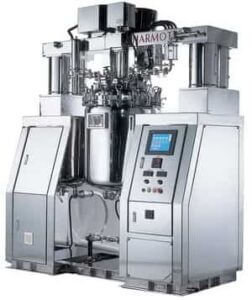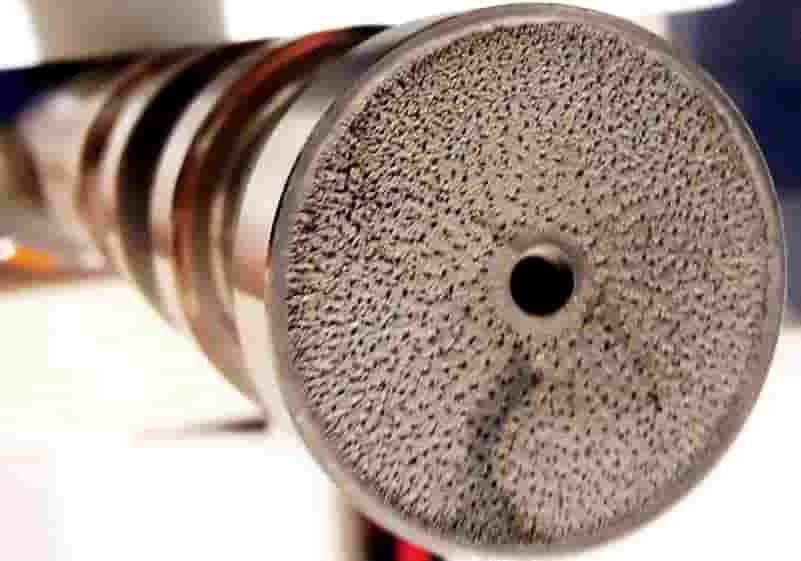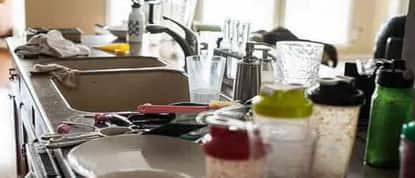Found out quite a bit more now about the topic and planning to post some of the results here.
Homemade "Lipo" tested in the laboratory
So here we go. I finally found someone who alleges that he tried to do the "homemade Lipo", with the usual methods involving normal ultrasonic cleaners and using a host of different methods and ultrasonic intensities and then send them to the laboratory to test the results. His testimony can be found here, but it is in german. Basically he tried a number of solutions, with standard Internet "homemade lipo" protocols and different ultrasonic cleaning machines with varying and increasing watt outputs, all kind of different protocols, and then send it to a lab for analyzing. He says that in the end he invested quite some money and effort and the laboratory results came not even near to Liposomal standards (see above post from me, what sizes and characteristics a Liposome is characteristic of). In the end he says, he could have spared the money and instead bought some from some reliable real Lipo manufactures. He hoped to safe money and produce cheap Lipo at home for his family, since the branded ones are so expensive. As many have done, with the Internet protocols...
So either he is making that up for some nefarious reasons, or as I suspect from my research so far (that confirms his observations), he tells the truth.
Labs where you can test you homeade "Lipo":
Here are two labs that you can send your products to, to test it for Liposomes and other stuff. The last lab I'm not sure about how and if it works there.
A real, "cheap", and good tasting Lipo-Seller with good ingredients:
The first lab has tested a brand I'll bring up next, that I think has by far the best Lipo-solution (that I could find) with concrete data to back it up, that was tested in that first laboratory, and also by the way, independently confirmed by the guy I brought up in the first paragraph above in his testimony. It also has the highest content of Lipo-Vit-C in it on the market while being the most "inexpensive" at the same time.
This Lipo company where I now ordered what I consider most likely real Lipo-C is called LipoLab. You get 500ml of Lipo-Vit-C for 54 € in germany without any additional shipping costs. It seems like the lab is either in germany and/or in the Netherlands. My guess is germany. I received mine in germany pretty quickly, 2,5 days after ordering. In germany, the minimum order quantity is one bottle. For all other countries it seems to be 3 bottles + additional shipping costs, and by that still much cheaper than other brands. I contacted the company to ask for the expiration date of the product unopened and opened. Unopened and cooled in 3-5 degrees Celsius (important!) the bottle can be stored one year! Which is very good. The bottle also has a milliliter cap and is light tight (also important!). Light, warmth and air decays Vit-C quickly. In the case of wrmth, everything above 30 degrees celsius destroys lipsomes. All of this is considered in this product. After opening the bottle it holds at least one month (in 3-5 degrees) before the Liposomes are gone, which is also pretty good. It is also the only company of the few I came up with (and I looked closely at many brands), where there is a good likelihood, that what they sell is actually Lipo-C, and from this small selection, the only one who doesn't use alcohol in the product that is put into a bottle. Also very good IMO. Thea are also planing on a new Lipo-Vit-C product that will be made out of bio acerola cherries. That bottle will cost 70 € though and only has 1/3 of the Vit-C content. They also succeeded to make it taste good (not easy) while not using any bad stuff.
Content: Distilled water, lecithin, ascorbic acid, phosphatidylcholine, stevia, natural flavoring.
15 ml liposomal Vitamin C contain:
Made out of:
- Vitamin C 3000 mg
- Phosphatidylcholin 1800 mg
- Fat 3 g
- Saturated fats 0 g
- Energy 27 kcal / 113 kj
- Lecithin from non-GMO sunflowers
- All natural flavoring
- Sugar- and gluten-free
- Without preservatives
Many other products are either questionable or a lot more expensive or have bad stuff in them:
Here are a couple of other producers of Liposomes in the EU listed in a table for comparison, some of which, like Dr. Mercolas, are rather questionable. It is in german and I agree with comment section in the right column about the different brands. There are a number of others too, that sell it but they are either very expensive or have bad stuff in them and more often then not, are rather questionable if you know what criteria to look for to determine the likelihood of it really being Liposomes.
Things to look out for on finding a reliable seller of Lipo-C:
For example: If they promote it as Liposomal and don't show some proof like specific nano sizes and laboratory results, that should be a red flag. Similarly, when they don't get specific what makes their product Liposomal. Also when you read in reviews of people who tested it something like; "I took a dose or more of it and got stomach pain and diarrhea" and when you read in on different platforms, there is a good likelihood that it is not a Liposomal emulsion. Or in the case of Mercolas "Lipo", when it is put into capsules and no cooling is needed that is a big red flag. Another criteria is the amount of Liposomes that are supposed to be in such capsule products like Mercolas, which is impossibly high for such a small milliliter dosis. There are also brands who seriously sell it as hard tablets which is absolutely impossible. Also if they state that their product is "micro" that is a sure sign that it is not Lipo because Lipo is in a nano size between 100 - 500 nanometers with specific characteristics like a double layer. Smaller then that, like under 100 Nanometers, should be fine too I guess, but rather unlikely that the company can sell this for relatively cheap money. Everything larger than 500 nanometers is not Lipsomal. Also if the product doesn't state that it must be cooled or the bottle is not light tight either via a light tight material or a light reducing color, that is also a sign that it might not be Lipo. Or if the company states an impossibly high shelf life as soon as it is opened, even when alcohol is in it, that is also a red flag.
There are a few brands that seem to be sound though, but they don't come even near the cheapness and good overall impression like the one from LipoLab mentioned above. So I don't list them here. If you want to, I can do that though.
Lab-Company that can produce cutting edge specific Lipsomes and properties of thereof on demand, depending on purpose:
The following company provides cutting edge Liposome production on demand for specific purposes and tasks in the body. See my other post above about some of this methods to modulate the Liposomes, also mentioned by Dr. Levy.
Here is the list of what Lipsomes they can produce for what purposes:
- Macrophage Depletion Reagents (Clodrosome®)
- Liposomal Doxorubicin (Doxosome™ and Immunodox®)
- Surface Reactive Liposomes (Immunosome®)
- Liposomes for DNA/RNA Delivery (Genesome®)
- Fluorescent Liposomes (Fluoroliposome®)
- Lyophilized ATP Liposomes (ATPsome®)
- Plain Liposomes (Cellsome®)
- DOTA Liposomes for Remote Loading Radioactive Divalent Cations
- Lyophilized Liposomes for Formulators (Lyophosome™)
- Magnetic Liposomes
I guess those are far more expensive then real normal Lipo products on the market though. They produce it for the medical industry mainly, so it is made on demand and then send out. I guess many of those products are also designed to be directly injected into the blood flow.
Homemade real Lipo should be possible but more expensive (in regards to equipment and producing cost) and more complicated:
Next is how one might be able to produce real Lipo-Vit-C at home according to what I gathered so far, with more costs and efforts involved.
While looking into what people had to say, I also came across this post criticizing the "lab study" that was issued by Livon-Labs that was supposed to disproof that homemade formulas work and that some companies sell their stuff as Lipo while it isn't. After what I gathered I think he makes a couple of good point including about Dr. Levy support of this company. What he misses though is the research into what Liposomes actually are and what is needed to produce them and that it is indeed most likely true that what many sell and produce at home is not Lipo. He goes into an argument about what is an emulsion and what not, while missing the concrete facts of what a Liposome actually is and that according to this criteria, which the lab is referring to I think, those are not Liposome products. I also agree that it is not furthering credibility to not being able to read the study in full.
I agree that Levy would be better of not being an adviser for this company and being more supportive of others, like the one mentioned above, who sell much cheaper and without alcohol and such and openly give guarantees and lab results of their products. He has obviously a bias for Livon Labs, no doubt, but I agree with the poster that it is rather unlikely that he is doing that to mislead people. In short, the poster should educate himself a bit about the topic and then he would see that it is indeed rather unlikely that Liposomes can be produced with cheap equipment at home. He says for example:
Liposomes are actually very easily made by just mere shaking or vortexing! The problem with such simple mechanical energy, the liposomes are quite large. One needs them smaller and an ultrasonic bath will do that job.
Yes, you can create encapsulated Micells with shaking and vortexing for example, as well as with any normal ultrasonic bath, but a Micelle is not a Liposome! Big difference. Just because something is encapsulated, doesn't mean it is a Liposome! You can vortex and shake as long as you want I'm afraid, but you will never get Lipsomes through that process. An emulsion you can produce though, just not a Lipsomal emulsion. With ultrasonic that seems to be different, but you need much more power and very specific parameters like kHz and amplitude, temperatures etc. to achieve that, which is much more expensive. Or at least that is where I'm at at the moment.
I've found a number of professionals on the web, who seem to either in the business and/or biochemistry who all seem to agree that it is a bit more difficult and expensive process that can not be arcieved with those simple equipments at home. Here are a couple of websites I found in which some clear parameters are given that are needed to produce Liposomes. Some of which are the manufacturers you will see later on, of the equipment that is used in laboratories and manufactureres who produce Liposomes.
- Sonication of Biosolids — SONOTRONIC
- Ultrasonic Liposome Preparation
- Ultrasonic Treatment of Nanoparticles for Pharmaceuticals
- Liposomales Vitamin C selber machen / herstellen
You can read through those websites and get a good overview on what is needed and what Lipsomes are. The last link is in german though.
With those data at hand I went out searching for ultrasonic providers who produce the machines for the nanotech industry, including bio-nanotech. Which is the industry who primarily produces Lipsosmomes for genetics, biochemistry and supplement markets. All those different sources (also partly mentioned in the last links above) say similar things about what is needed for producing bio-nano stuff like Liposomes:
- At least 500 Watt (if you want to produce any significant amount) high powered ultrasonic device that must be between 20-21 kHz (apparently 20 kHz is best for that specific purpose) in which temperature can be controlled
- It can be done at lower powers too I think, but you need the right kHz number, amplitudes and such, but you can only produce pretty small amounts. Cooling is very important.
- Cooling
- Specific amplitudes
- the more you want to produce the more power you need and the more cooling
- the power, time, and cooling needed for one batch scales up 10 fold if you increase the volume of the watery material in one batch lets say from 50ml to 500ml. That is if, you do things in one batch. There are solutions from companies that can get around that somewhat, see below
- The high power needed for producing larger amounts, the cooling, equipment, protocols and time needed, are the main reason why real Lipo is not sold very cheaply
- Liposomes get destroyed in temperatures above 30° Celsius
- Similarly, Vit-C starts to decay quickly the warmer it gets, when it is dissolved in water
Companies that sell needed equipment
I found three companies that sell the equipment needed either as full package with cooling and all other parameters included, and/or the different parts that are needed to assempble it.
One company is from Japan, one from the US and another from germany. The german one seems to be the best quality with a lot of parameters already accounted for within the machines.
The three company are:
- https://www.m-technique.co.jp/e/html/shouhin/sub_categoly/batch_renzoku.html
- Ultrasonic Devices for Liquid Processing
- Products | Sonics & Materials, Inc.
As I gathered if you want to produce bigger amounts, lets say to give it to others regularly outside of the family, you probably have to invest around 12.000 - 17.000 Euros in the equipment. If however you only want to produce small amounts fairly quickly, that number could go down significantly, I'm guessing you end up well under 10.000€ then.
The last company above is the only one I could find that sells small ultrasonic equipment for that purpose. It is either this or this ultrasonic device which one can get around 3,500 to 3,100 Dollars. That is without the cooling and such needed though. Theoretically, you could cool such small batches within an ice bath, making sure that the temperature doesn't get to high, and if so, stop, cool it down again, and start again. The german one also sells smaller powered equipment, but it is not in the kHz range needed for Lipsomes. So that is not an option.
The nice thing about the german as well as the US one is, that you can also buy a bit stronger powered equipment like this german one or those two american ones. For both you can buy flow cell reactors with which it is possible to produce about 0.25 and 2.0L/min of the finished product, in the case of the german one for example. The american one also can be used with a flow cell with up to 30L/hour.
The german one is far better though, since it can also cool the material in it at the same time, which is needed for Vit-C/Liposomes. Both, (the german as well as the american one) seem to be able to automatically adjust amplitudes and power outputs depending on the batch size and container etc. Which is very handy, especially if you want to produce larger amounts continuiusly. The two smaller american ultrasonic machines, mentioned in the last paragraph above, also seem to be able to do that.
The beauty of the flow cell reactors is that in the german case it can cool and produce constantly, thereby being able to produce large amounts a day. As for pricing, the american ones are around 5000 US Dollars. For the german one I couldn't find a price, but from what I gathered it should be in the same ballpark, maybe a bit more expensive though.
It seems to me that the german one is the most thought through and realiable for the Lipo production. You can also safe and adjust freely all aparameters for future batches. You can also remote control it vie Lan cable. They also offer to build up your wanted setup in their company in germany for testing and adjusting, with all details needed, from start to finished product, before it is delivered. Which is a huge plus too. So from my side the german one, if one is so inclined to do, is indeed the best one for a setup that can produce larger amounts.
The american provider lacks behind not only in that regard quite a bit to the german equipment. The japanese one on the other hand, sell a complete system, already put together for producing Liposomes, I think. Which also has its plus sides. Although I'm not sure there, since they do not provide specifics like kHz directly on the website.







